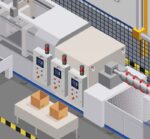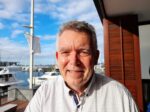7 steps to reboot your business
Edwin Dando co-founder Radically If you’re one of the many businesses struggling in Auckland after months of lockdown Edwin Dando from Radically has 7 steps to get your business cranking. As Seth Godin says, ”Opportunity is another word for a problem to be solved.” Put yourself in your customer’s shoes If you’re in business your job is to create a customer. Too many businesses think about what they need not what do my customer’s experience. So what is life like for them right now? What are the problems? What can your business do for them to make life a bit easier? Understanding your customer and their real pain points is the first step to unlock opportunities. Validate what your customer needs It is easy to think you know what your customer needs, but it’s wise to validate this. Call people you know. Ask them what similar challenges they have had. Ask your customers the same questions. When they visit your business or you speak with them, use this as an opportunity to find out their challenges. Remember every problem is an opportunity for you to add value. Engage your team A common mistake many business owners make is assuming they have to solve all their business problems alone. This can make running a business very lonely! Don’t forget your team are naturally creative and probably have some good ideas. Don’t ignore the receptionist who often sees everything but is never asked for their view. Your retail staff probably see some easy wins and just wish someone would listen to their suggestions. Create a culture of real interest in your customers so that everyone thinks about how to add value to them. Design solutions Talk through possible solutions to your customer’s problems with your team. Get creative! Don’t dismiss any ideas […]










